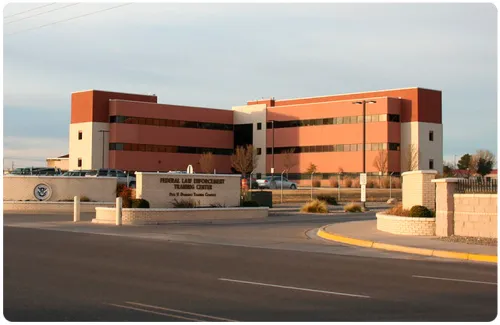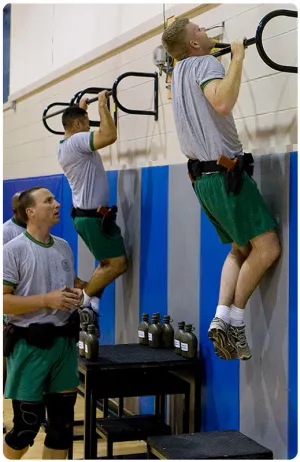When class session 583 reported to the Border Patrol Basic Academy in Artesia, New Mexico on October 20, 2004, it marked the beginning of a new era in U.S. Border Patrol training history, with operations unified in a single location for the first time in several years. CBP Commissioner Robert C. Bonner dedicated the new operation the next day, commemorating the consolidation of all Border Patrol basic and advanced training into a single, state-of-the-art facility.
The Border Patrol Academy dates to Border Patrol’s founding; the idea for a national academy was discussed as early as 1934, and the first class graduated soon after, on March 17, 1935. Still, early training for Border Patrol agents was not nationally unified until 1936, and before that, was largely provided by individual districts and sub-districts. Located in El Paso sub-district and Station headquarters Camp Chigas, the first national training facility opened in 1936, and training continued there through the 1940s and 50s. Border Patrol classes began to be numbered consecutively in 1940, beginning with #1 held at Camp Chigas that year.
The path to Artesia was a winding one; as the Border Patrol grew to meet the needs of a changing postwar United States in the 1950s and 1960s, training facilities changed location several times through the decades. By 1951 and 1952, for instance, the training school moved to the campus of the New Mexico College of Agriculture and Mechanic Arts in Mesilla, New Mexico, and through the late 1950s and into the 1960s and 70s, training sessions were held at a variety of locations, shuffling between places like McAllen, Texas, or Las Cruces, New Mexico. For a time, the Border Patrol Academy was even located on Fort Bliss in El Paso, Texas. In July 1961, the academy was moved to Los Fresnos, Texas in what is now the Port Isabel Service Processing Center detention facility, where it stayed until that was badly damaged by Hurricane Beulah in 1967. Then, the academy had to be temporarily moved to Calexico and Chula Vista, California. A few years later in 1976, it joined the National Police Training Facility at Glynco Georgia, with additional facilities at Chula Vista, California, Calexico, California, Charleston, South Carolina, and Artesia, New Mexico.
By 1988, to accommodate a Border Patrol hiring push, Federal Law Enforcement Training Center (FLETC) opened a temporary training facility at Fort McClellan Army Base in Alabama. The next year, FLETC acquired the former Artesia Christian College’s 2,450 acre campus, turning it into a training center which opened a year later, in 1990. By 1996, a satellite Border Patrol Academy opened at what was once the Charleston Naval Base in Charleston, South Carolina. Sessions continued at Charleston, and Glynco through 2004, when all training was finally unified at the Artesia facility.
The Artesia site is uniquely suited for the reconsolidated Border Patrol Academy because of its location, climate and terrain. Its proximity to the Southwest border, a focal point of CBP’s Southwest Border operations, allows agents to train in a realistic environment with situations that simulate the demands and challenges they may face in their future border security operations.
The facility offers trainees an immersive and rigorous 19-week training experience where students work with retired Border Patrol agents using a technique called scenario-based training. Students also take courses in federal immigration and nationality laws, anti-drug laws, criminal law and statutory authority, behavior science, Spanish language, Border Patrol operations, care and use of firearms, physical training and self-defense, arrest techniques, and defensive driving. Additionally, the academy provides the best in anti-terrorism training and advance Border Patrol training.
In 2013, $1.2 million was dedicated to enhance Border Patrol training with more realistic border patrol training settings like backdrops of a border wall, a simulated field environment, or a mock detention facility. Later, a real-world detention center was built on-site, which proved especially useful after an influx of Central American migrants filled other nearby detention sites. An additional temporary detention center was also constructed to hold as many as 672 detainees at one time, while ten acres of the site, including existing dorms and classrooms, were converted to serve as medical centers and processing centers. Although the temporary facility was closed at the end of 2014, it provided real-world experience for trainees beginning their careers with CBP. All totaled, more than $30 million in improvements have been made to the facility since the early part of the 21st century, and the investment is put to good use, since FLETC now offers possibly the best and most comprehensive law enforcement training in the world, all in one perfectly situated location.




